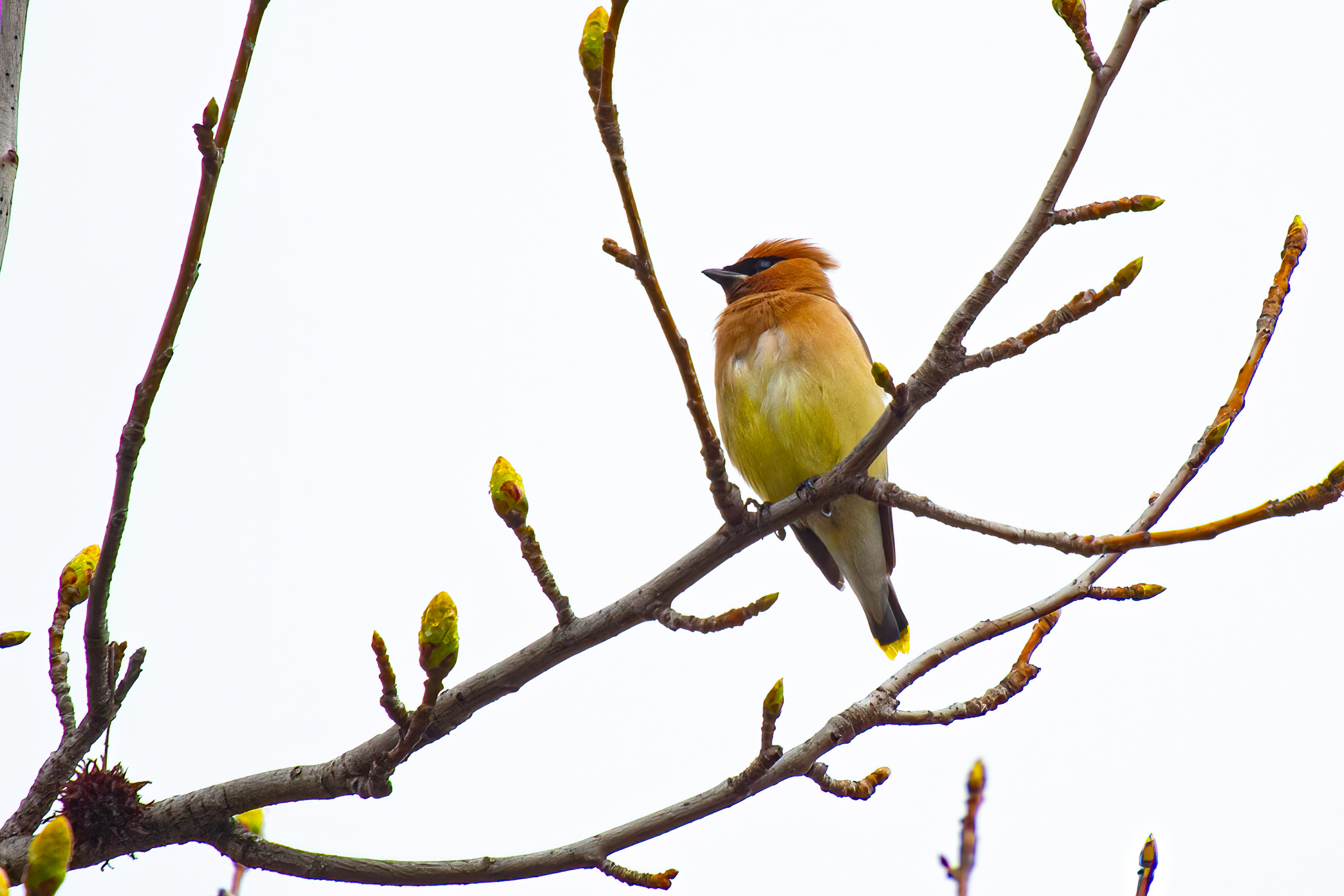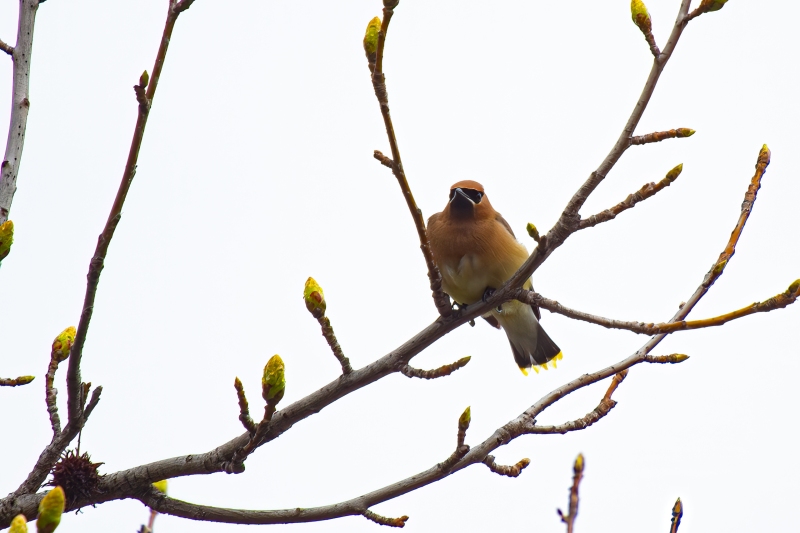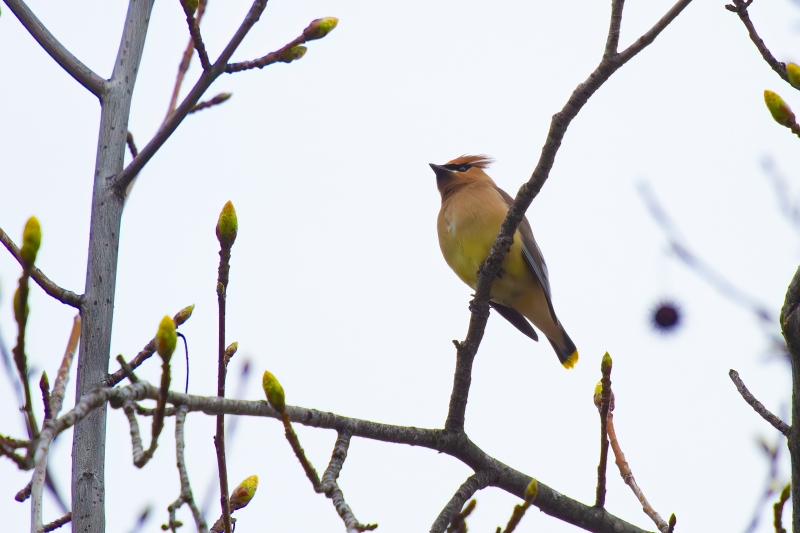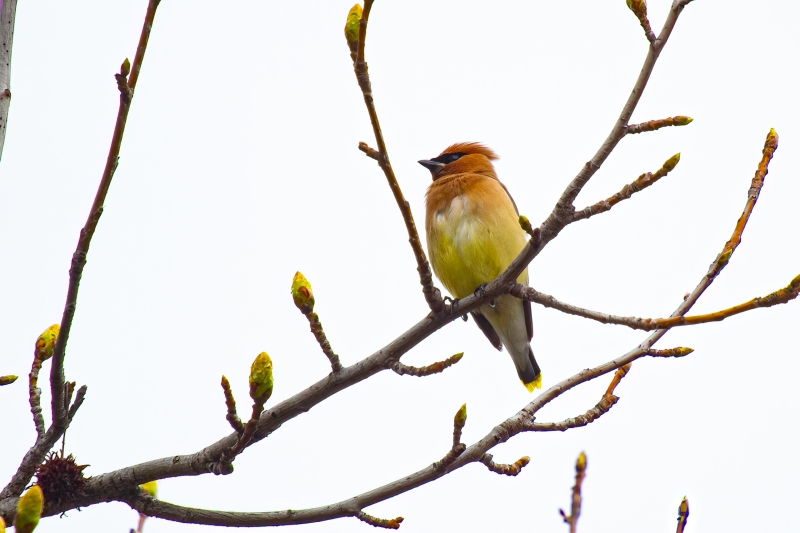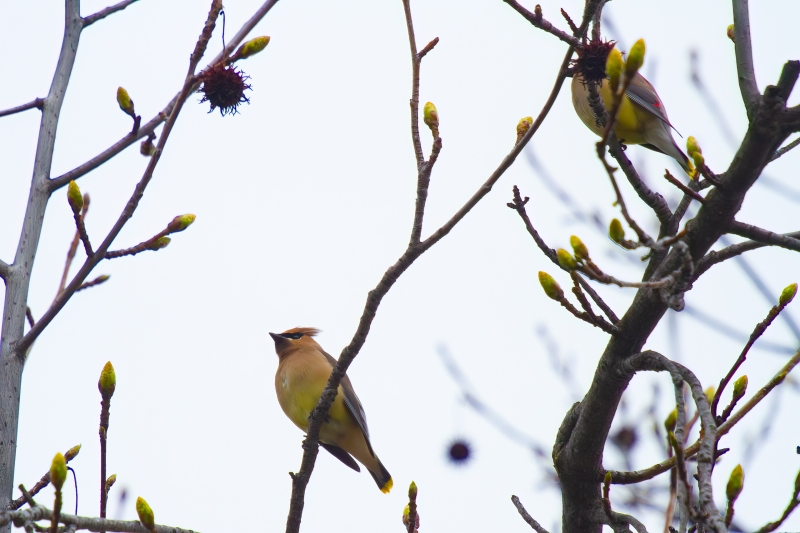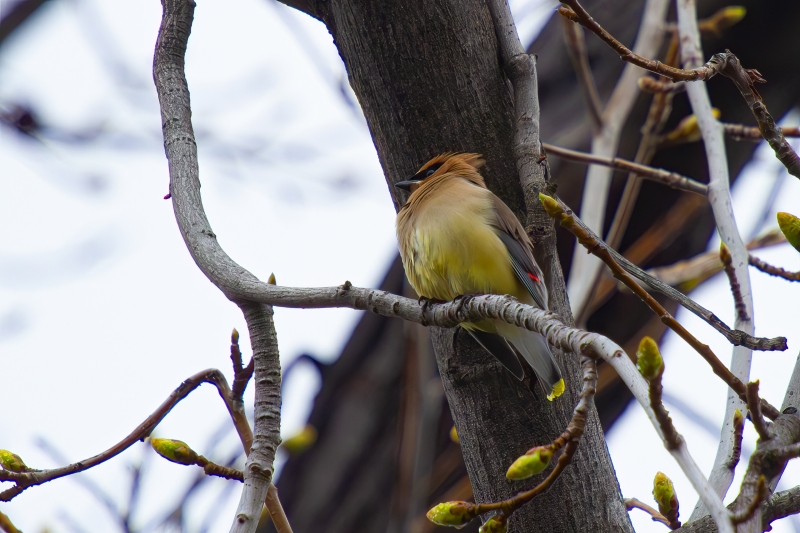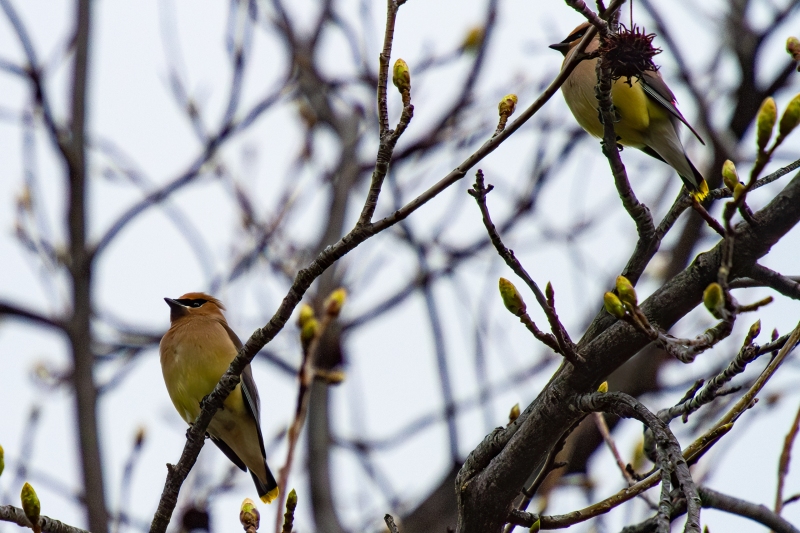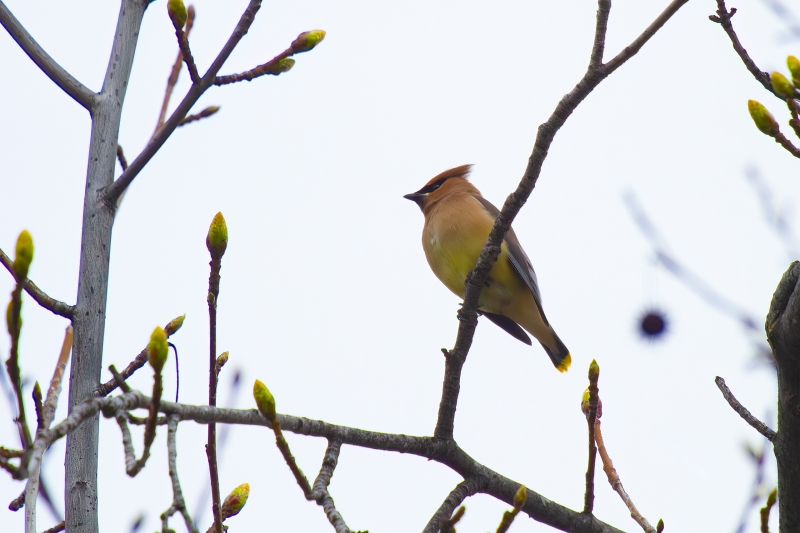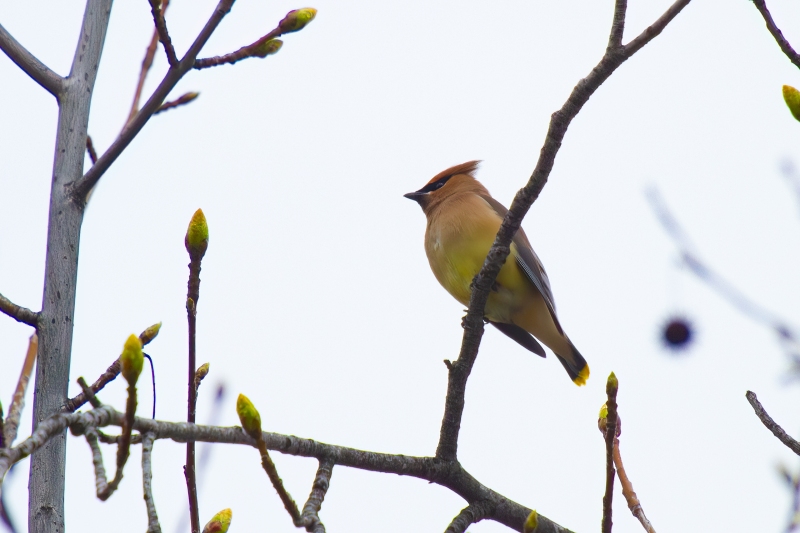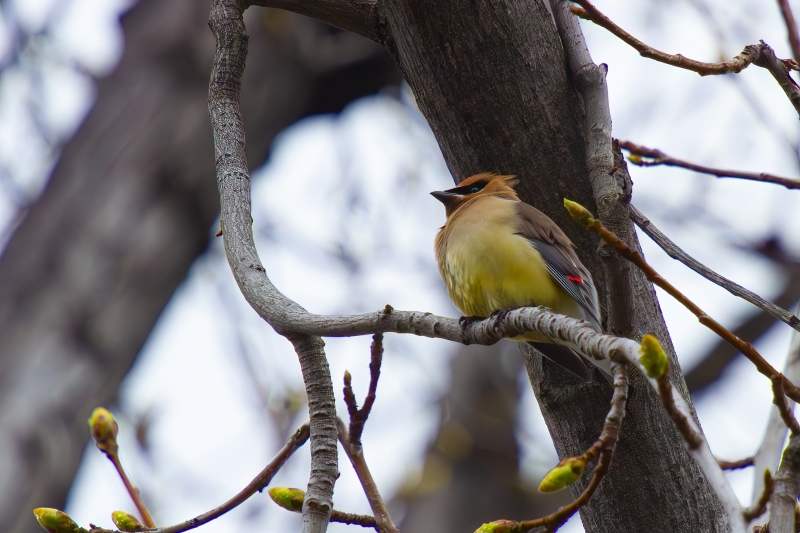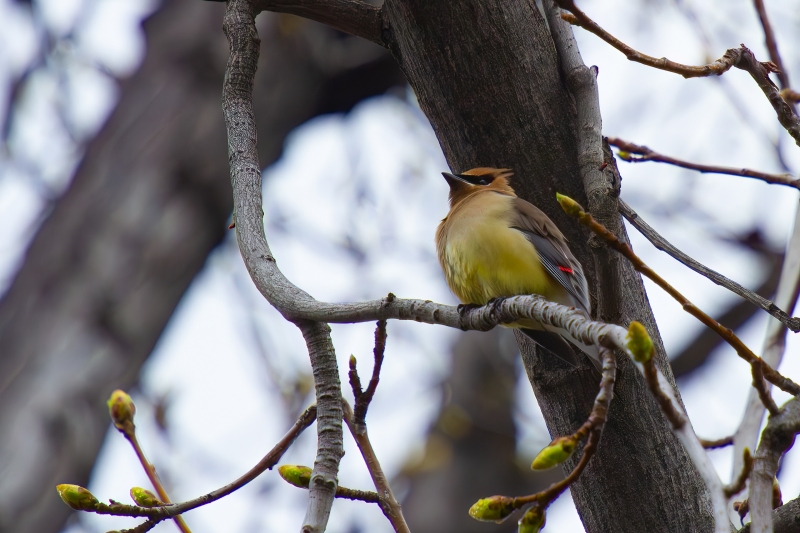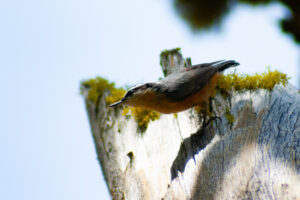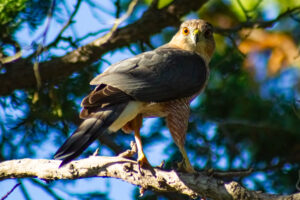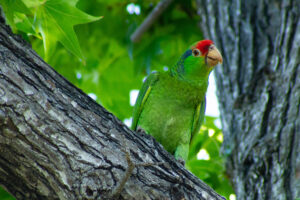The Cedar Waxwing (Bombycilla cedrorum) is a member of the family Bombycillidae or waxwing family of passerine birds. It is a medium-sized, mostly brown, gray, and yellow. This bird is named for its wax-like wing tips. It is a native of North and Central America, breeding in open wooded areas in southern Canada and wintering in the southern half of the United States, Central America, and the far northwest of South America. Its diet includes cedar cones, fruit, holly berries, and insects.
Preferred habitat consists of trees at the edge of wooded areas, or forests, especially those that provide access to berry sources as well as water. They are frequently seen in fruiting trees. Waxwings are attracted to the sound of running water and like to bathe in and drink from shallow creeks. In urban or suburban environments, waxwings often favor parkland with well-spaced trees;
golf courses, cemeteries, or other landscaping with well-spaced trees; bushes that provide berries; and a nearby water source such as a fountain or birdbath. Also look for them near farms, orchards, and gardens, particularly ones with fruiting trees or shrubs.
Cedar waxwings are sociable, seen in flocks year round. They are non-territorial birds and will often groom each other. They move from place to place depending on where they can find good sources of berries.
